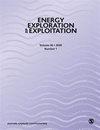基于LMDI技术和经济分析的LEAP模型预测能源消耗:一个案例研究
IF 1.6
4区 工程技术
Q4 ENERGY & FUELS
引用次数: 0
摘要
本研究报告了对数平均分割指数(LMDI)的实施情况,并对2010年至2021年三个不同工业部门的总能源使用增长进行了分类。在此基础上,对影响旁遮普省能源消费的因素进行了分类和评价。增长消费分为规模影响、结构影响和效率影响。同样,长期能源替代规划-旁遮普模型在能源消耗、规模影响、结构影响和效率影响下执行。此外,还引入了综合调整情景,考察了三种不同因素对总体能源使用的影响。LMDI定性分解的结果表明,高规模会导致旁遮普省的高能耗。然而,它可以通过高效加固来减少。与慢速术语(SIAS)和综合情景结构影响分析相比,参考情景下2024年、2036年和2044年的总能耗分别为304.12亿吨、460.01亿吨和590.04亿吨。因此,它可以预测并为该省提供更早的能源管理规划。相反,结构因素对能源使用的影响不明显。同样,长期能源替代规划(LEAP)模型的定量结果与LMDI模型的定量结果相对一致,合理地外推了LMDI模型对结构影响的有利影响。这一现象表明,从未来的角度来看,结构影响和效率影响将保持对整体能源使用增加的破坏性影响。因此,LEAP模型在中期发展框架下预测了旁遮普省2020 - 2040年的能源消耗。本文章由计算机程序翻译,如有差异,请以英文原文为准。
Predicting energy consumption through the LEAP model based on LMDI technique along with economic analysis: A case study
This research reports the implementation of logarithmic mean Divisia index (LMDI) and categorizes the growth of total energy usage in three different industrial sectors for the years of 2010 to 2021. Furthermore, it classifies and evaluates the factors influencing on energy consumption in Punjab province thru a sustainable way. The growth consumption is classified into scale influence, structure influence, and efficiency influence. Likewise, the long-term energy alternatives planning-Punjab model is executed with the energy consumption, scale impact, structure impact, and efficiency impact. Besides, comprehensive adjustment scenarios are also introduced to examine the impact of three different factors on overall energy usage. The results from the qualitative decomposition of LMDI indicate that the high scale can lead to high-energy consumption in Punjab Province. However, it can be reduced by high-efficiency reinforcement. The total energy consumption in 2024, 2036, and 2044 under reference scenario is 304.12, 460.01, and 590.04 million tons compared to structure influence analysis for slow terminology (SIAS) and comprehensive scenario. For that reason, it can predict and provide earlier energy management planning for the province. Conversely, the structure factor does not display obvious effect on the energy use. Equally, the quantitative results of the long-term energy alternative planning (LEAP) model are relatively consistent with those of LMDI model, whose advantageous impact on the structure influence is reasonably extrapolated. This phenomenon indicates that the structure influence and efficiency influence will maintain the disruptive impact on increasing overall energy use for the future perspectives. Consequently, the LEAP model predicts the energy consumption of Punjab Province among the years of 2020 to 2040 under medium-term development framework.
求助全文
通过发布文献求助,成功后即可免费获取论文全文。
去求助
来源期刊

Energy Exploration & Exploitation
工程技术-能源与燃料
CiteScore
5.40
自引率
3.70%
发文量
78
审稿时长
3.9 months
期刊介绍:
Energy Exploration & Exploitation is a peer-reviewed, open access journal that provides up-to-date, informative reviews and original articles on important issues in the exploration, exploitation, use and economics of the world’s energy resources.
 求助内容:
求助内容: 应助结果提醒方式:
应助结果提醒方式:


